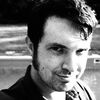Matt Stutzman: “I can hang with the best”
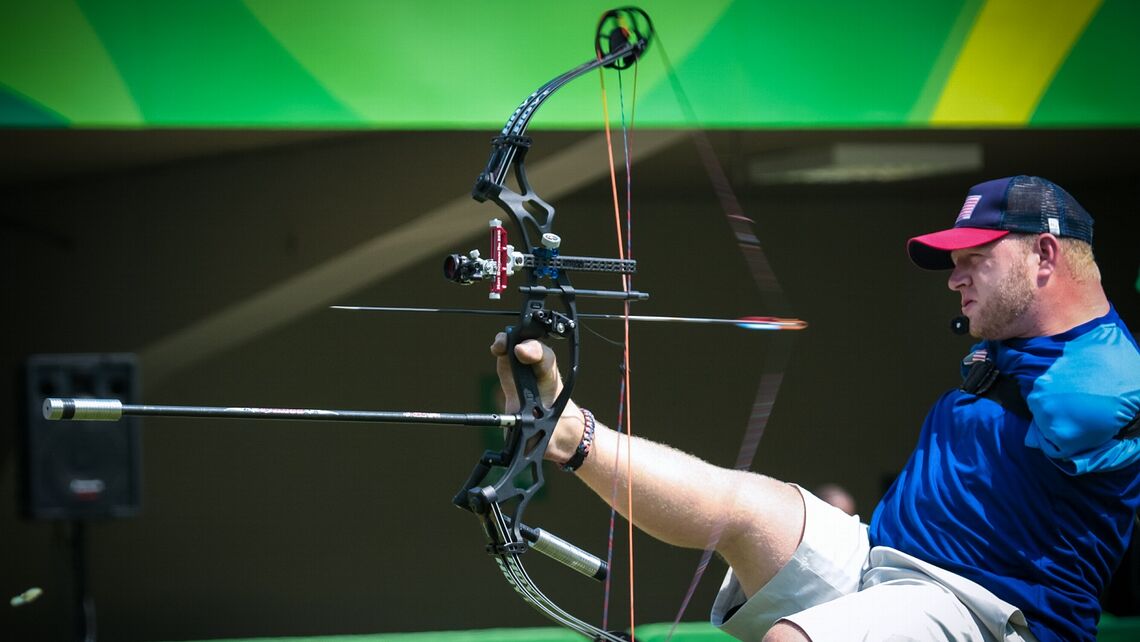
Matt Stutzman didn’t start archery with the intention of making it to the Paralympic Games.
“In 2011 I was in Vegas for a tournament, and someone approached me and said: ‘You should shoot Paralympic archery’,” said Matt. He had no idea what the Paralympics was.
“So I Googled it.”
He started shooting para archery qualifying tournaments and soon made the US squad for the Paralympics in 2012. After making the trip to London, a then-unknown Stutzman took a silver medal in the compound open competition, and became a minor media star.
His profile was raised even further by a Guinness World Record for archery’s “farthest accurate shot” set in 2015.
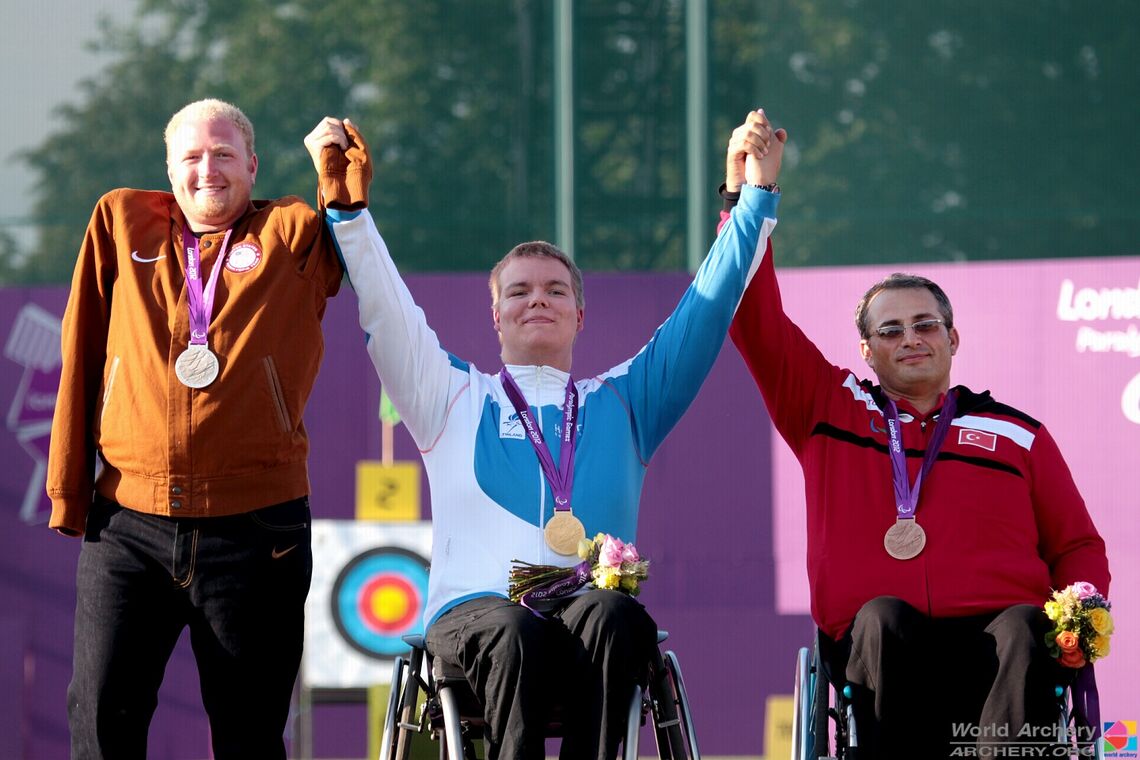
“The weird thing about it is the fans now. Everywhere I go there’s like pictures, people interrupting. Learning how to manage that and not make anybody mad is part of it, because they’re your fans and they help pay the bills,” he said.
Stutzman originally took up archery as a means of putting food on the table.
“I mean, I Googled ‘how to shoot with no arms’, and there was nothing,” he said. Stutzman developed a method of shooting involving holding the bow with his right foot and triggering the release with his jaw.
That was then. Now, he’s developed a far deeper understanding of the sport and his archery technique.
“In London, I used a trigger release that was activated by my jaw. The new one is actually a hinge, and it’s activated by my back. So it’s become a process shot, let it happen, aim in the middle. It enables me to be a lot more consistent,” he explained.
“I felt in London I would get target panic a lot, because I would just want to get on target and go bang.”
“I’m always looking for that next step to give me the edge, and I felt like a hinge is going to give me the edge this time, because I’m able to put it in the middle now, stay where I want to be.”
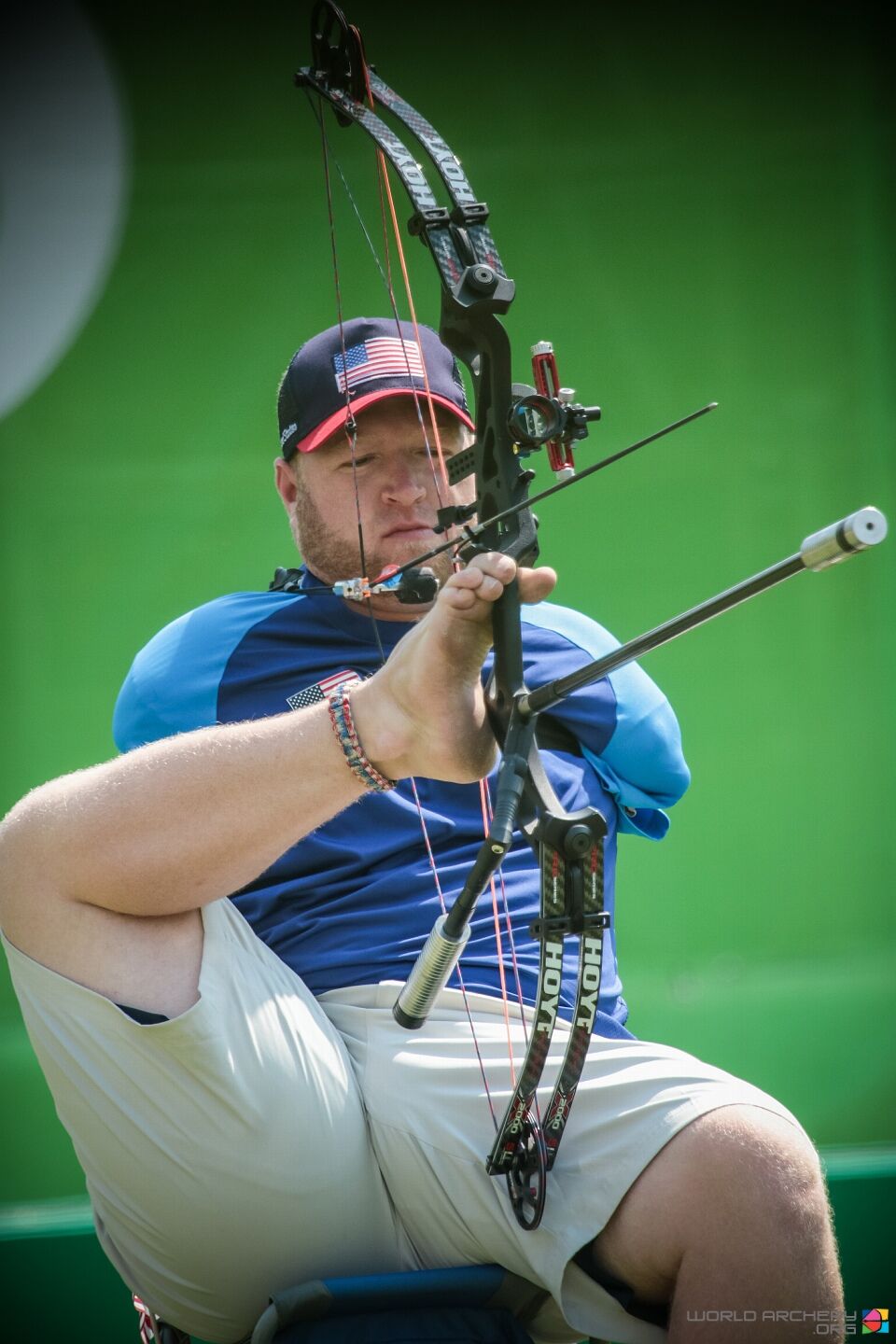
The road to Rio hasn’t been easy. Stutzman injured his shooting leg a couple of months before the Games and had to take four weeks off for rehab.
He spent five hours a day on mental training, pretending he was at the Paralympics, smelling the air, visualising the crowd and what a shot would feel like when he hit the 10.
“That way, when I got here, I felt like I had been here before,” he said. Stutzman even jumped out of a plane, then shot an arrow, to simulate the kind of adrenaline he’d feel in the Paralympic stadium.
“I didn’t do that kind of thing in London, when I was still very new to the sport. This game is different [in Rio], the skill level is higher. I know the difference between me winning a medal and not winning a medal is my mental game. So I wanted to focus more on the mental side this time than I ever have.”
“I’ve always had the mentality that I want to be the best archer in the world. I don’t care who I’m shooting against. Even now, I don’t know who’s in my bracket, and nor do I care. I’ve never looked at it. I’ll just step on the line when they tell me to shoot. I look at the person and say, ‘okay, that’s who I’m shooting against’.”
Stutzman’s only weak point, by his own admission, is timing.
Archers in Olympic and Paralympic competition get only 20 seconds per arrow to shoot, and Stutzman takes more time than other archers to load the bow with his feet.
“I’ve practiced a lot with the 20 second clock. I’ll run it down to two seconds a lot, but my brain is comfortable with those last few numbers. I can still hold and execute, because I practice it a lot. I always say that if you gave me more time, I could never lose,” he said.
“I know John Stubbs has said if we end up shooting against each other, he will shoot really fast to try and put me off. But he doesn’t know I also practise with a 15 second clock.”
Stutzman smiled. He’s prepared in Rio.
He’s also got medal expectations, but was keen to emphasise the wider picture, too.
“Whether I win or lose, I’m leaving a legacy for people to watch. Look at that guy, he has no arms, and he’s shooting. He didn’t let having no arms stand in the way of doing something he wanted to do, and for me that’s what’s important, changing just one person’s life. If I get a medal that’s great on top of everything else,” he said.
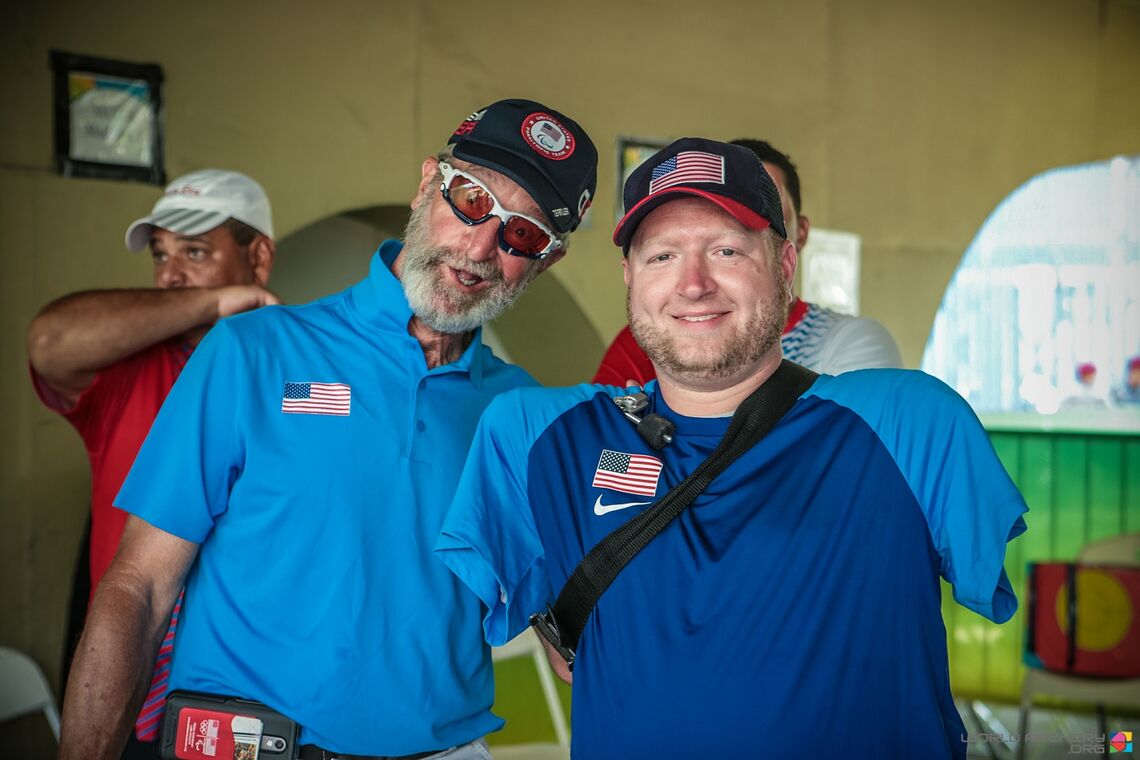
Whatever happen in Rio, Stutzman has big plans for after the Paralympics.
“In the US you have to decide to shoot para or able bodied archery. You can’t do both. I want to make the World Cup team, shoot with Reo and Brady and those guys. My focus next year is able-bodied archery. So I won’t be doing para events next year. To be the best I have to shoot with the best in the world. Not that people here aren’t good, because they’re excellent, but my goals are World Cups, baby,” Stutzman said.
“I wanna shoot against Stephan [Hansen], Christopher Perkins. I want to step up to the line with those guys and battle it out.”
And Stutzman’s scores are up there to be able to take on World Archery Champions. His best ranking round, in practice, is 702 out of a possible 720 points.
“I shoot a lot of 699s. There’s a little hump there. In practice around 708-715. I still have to work on my release, how to get it with less movement,” he explained.
Matt’s list of achievements is already long, and includes the silver he won in his Paralympic debut. One other event he highlighted, though, was the USA indoor nationals in 2014. He was just one of seven people not to drop a point.

“I believe I was the first person with a physical disability to clean a professional tournament. I beat Reo Wilde, Levi Morgan. For me, that says I’m there, I can hang with the best,” he said.
“I notice when I shoot with the pros, the respect level is different. They don’t look at you as a para archer, they look at you as a professional that’s there because he’s the best at what he does. And I feel like I can compete with those guys.”
Stutzman, although he brands himself as the Armless Archer, the description doesn’t define him.
“When I was younger I wanted to be Michael Jordan. I’d still like to be the Lebron James of archery or something. That guy who is good, and people like him because he’s good or they hate him because he’s good,” he said.
Stutzman, probably the only archer in the world that can truly call his technique unique, is 33 years old. He is a Paralympian, he is an athlete and he is extremely talented.
He wants to be the very best.
The para archery competition at the Rio 2016 Paralympic Games runs 10-17 September in the Sambodromo.
